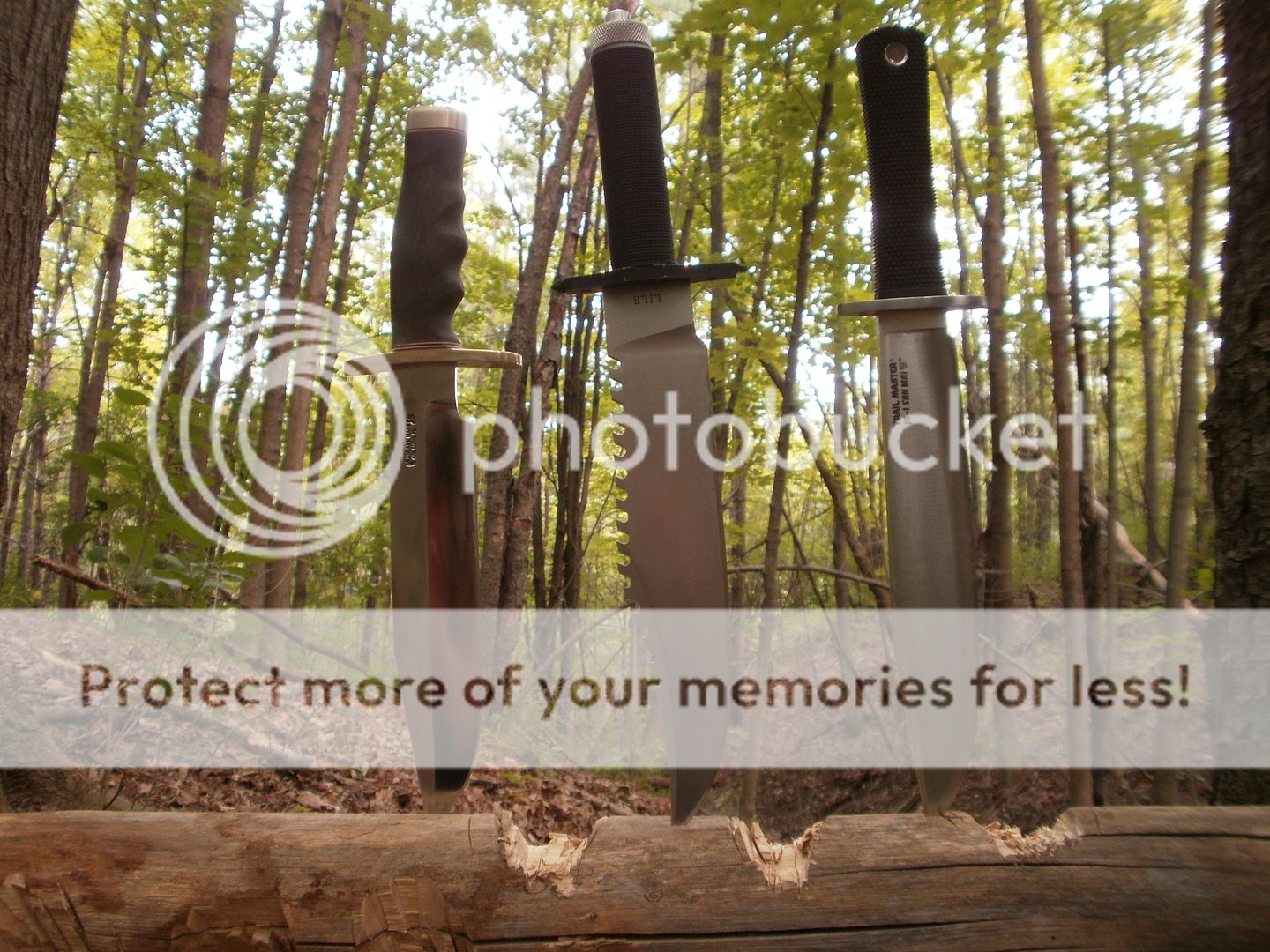Jerry Busse also made hollow handles with the reversed saw as well. He just did a run of saw backs not long ago and they seem to work pretty well.
I had forgotten about the Busse saw design: True!
The funny thing is Jerry Busse did do a few sawbacks in he early 1980s, and they were even some that were hollow handle types! One looked a bit like the Buckmaster with a reversed saw, so he picked up on the idea of the reversed saw right from the start...
As to not liking a design just for the double guard.... Hard to say: One thing that I often noted is that, when looking at a knife, photos will often give you no idea of how it feels in the hand. The Farid First Blood for instance felt exactly the way it looked... While the Lile "Mission" is truly a strange experience to handle, even today after all this time...: Some knives simply don't feel the way they look.
I have found over time I prefer the feel of hollow handles over any other type of handle, but the interaction of the guard with the hand is a crucial factor: The guard shape can have a huge impact on a round handle, because the hand can use the guard to "orient" and stabilize itself: If you don't know about hollow handles, I would say avoid the large oval guard types, and choose the skinnier lozange or hexagonal shaped guards: They make a huge difference...
I still
slightly prefer a thin-edged hollow grind for chopping, but
not with round hollow handles... (Compatibility with saber-ground hollow grinds is actually for me the biggest functional reason to prefer a conventional "oval" full tang handle!): The skinnier flat grind is more stable and less prone to rolling, so combine that with an hexagonal guard, and the difference in rolling stability is very large compared to a hollow grind blade design fitted with a round handle and a wide oval guard...
On an hexagonal guard I find the top quillion is never a problem to moving the thumb forward, because the guard is so narrow there that the thumb can run besides the guard and still easily reach the blade back. On an oval guard that is a real problem... Personally I can't stand the way a single guard looks, and I find it advantageous if the snap strap catches on the top quillion not the bottom, so I like a large top quillion for that reason alone...
I find a very long bottom guard is essential hand protection while chopping, because I tend to hit close to the guard to get the most weight into the chop. I have at least twice really bent a guard for hitting too close while chopping... I had the Sly II guard unbent by Josh, with no problems, and tried to unbend the Colin Cox guard myself, tapping with a padded hammer, and this did not work so well...: The tube handle moved 1/16" back, but stopped and still seemed absolutely rock-solid (it would not move back forward either, even when tapping!)... With a hugely overly long and very tight-fitting 2"+ tang, I felt stabilizing the now wobbly guard was good enough...: I don't even think the knife has been significantly weakened...: I tested it brutally, and neither the guard or blade have moved at all... I filled the gaps with glue and epoxy, and re-painted the guard with several coats of solid olive drab lacquer to completely hide the slanted joints: I actually like the very slight raked guard looks much better now(!), but it is a reminder that long guards are not a luxury when chopping...
Because the bottom guard has to be so big, it would look out of balance with nothing on top: I had a knife modified this way once and I hated the way it looked...
Functionality-wise the things I hate the most are: 1-thick edges, over 0.025", and 2- Non-functional sawbacks... The only sawback knife I own that is like that right now is the Andrew Clifford Sly II, but here the notches are so small and so wide apart it almost seems like he never really intended this to be a saw...
Gaston





